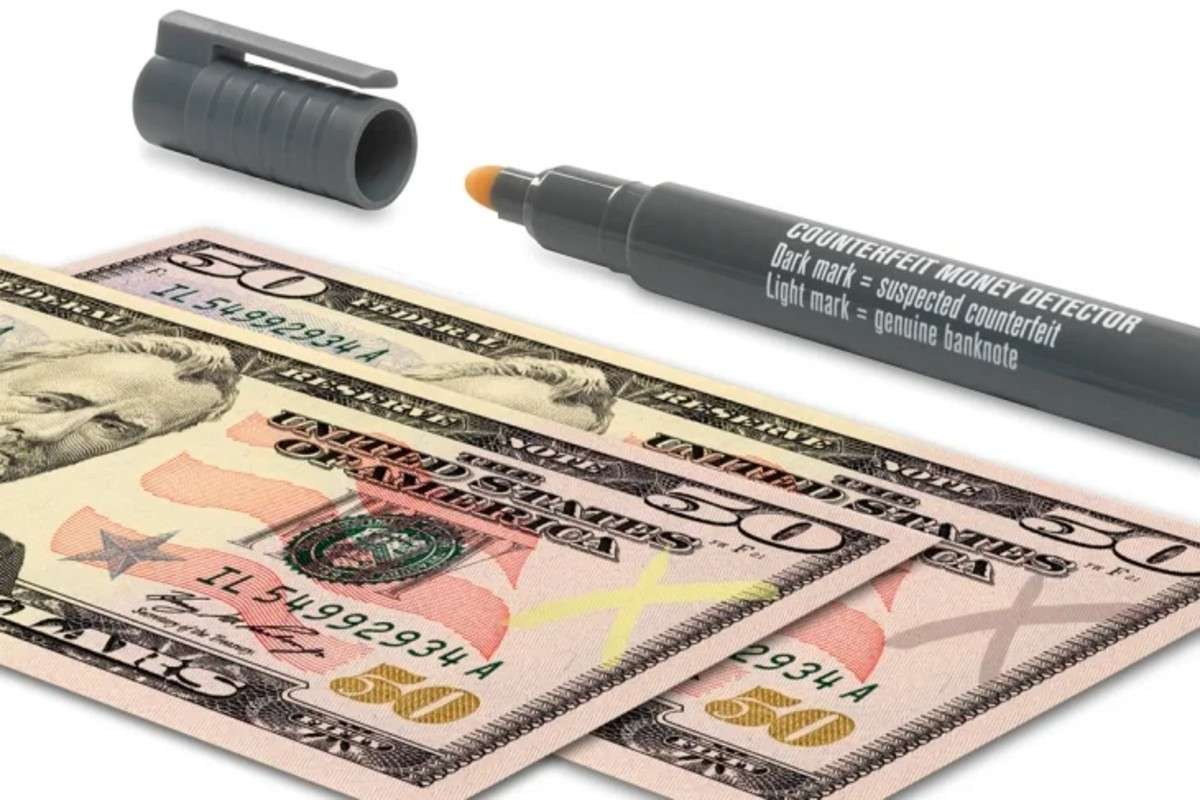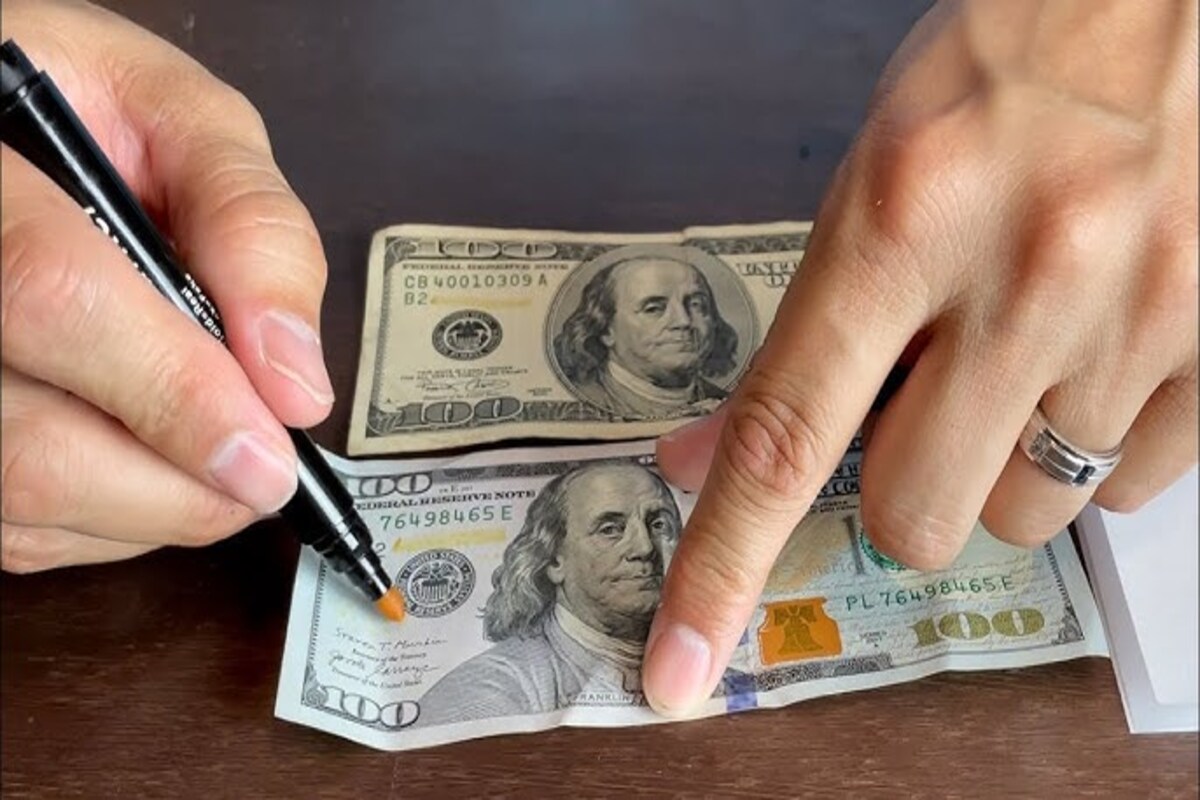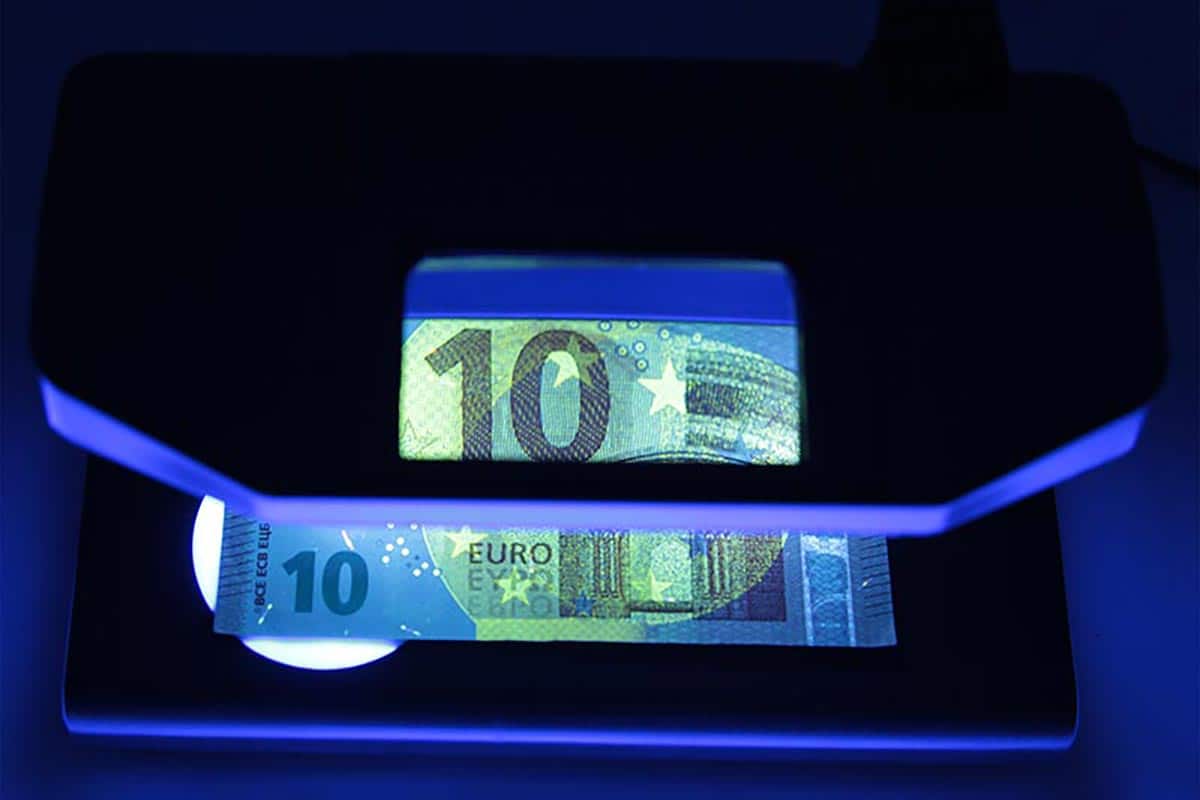Money Authentication: How to Use Counterfeit Pens & How They Work
Ever wonder if that $100 bill in your hand is real or fake? Well, one of the quickest ways to check is with a tool called a counterfeit money detector pen. Let’s say you’re running a small shop or working the register. A customer hands you a crisp note. You take your counterfeit detector pen, draw a line, and check the pen mark. What happens next depends on some smart chemistry and we’re here to show you how it all works.
In this guide, we’re going to break down how to use a counterfeit pen, what it actually does, and how to tell the difference between genuine bills and fake bills in a few seconds. Let’s dig in!
What Is a Counterfeit Pen?
A counterfeit pen, also known as a counterfeit money detector pen or counterfeit detector pen, is a quick and handy tool used to tell real money from fake money. It looks just like a regular marker but has a special ink inside made with iodine solutions, which reacts with starch.
Why is that important? Because genuine currency - especially U.S. currency - is printed on starch-free paper. This material doesn’t react with iodine. So when you mark a real bill with the pen, it leaves behind a pale or slightly yellow line. If the bill is fake and made with common materials, that same pen leaves a dark mark.
The idea is to quickly test if the bill is printed on the correct kind of paper - currency paper stock - or just something grabbed from a home printer tray. It’s not about detecting every single fake, but it can help spot the easy ones. And that makes it a helpful first step for cashiers, market vendors, and anyone handling denomination bills on a regular basis.
How to Use a Counterfeit Pen

Using a counterfeit money detector pen is super simple. It’s a bit like using a highlighter, but instead of colouring in your notes, you’re checking if they’re made of the right kind of paper.
Here’s how to use a counterfeit pen properly:
Keep your pen capped when not in use, and test your pen from time to time on a bill you know is real. If the ink has dried out or turned weak, it might not give you accurate results.
It’s also good practice to use the pen on multiple spots if you suspect something’s off. For example, if you mark one corner and it turns dark, try another area. Sometimes, surface contamination (like oils or food) can affect how the ink reacts.
And if you're a business owner or cashier handling cash every day, consider keeping a few pens on hand, especially if you accept larger denomination bills. They're inexpensive and easy to train staff to use.
- Pick a clean spot on the bill – like an edge or white area that doesn’t have a lot of printing. This helps you see the colour change clearly.
- Draw a short line or dot using the pen. Don’t scribble or write too hard - just a gentle mark is enough.
- Watch the colour develop. If it stays pale yellow or tan, you’re holding a real bill made with the proper starch-free paper. But if the mark turns dark brown or black, that’s a warning – it could be fake money printed on wood-based paper.
Ready to sell?
Are you ready to sell your currency? Stop waiting and request a Shipping Kit. We will provide everything you need to ship and receive funds for currencies you own.
How Do Counterfeit Money Pens Work?
Alright, let’s talk science. As mentioned before, counterfeit money detector pens contain a special ink made with iodine solutions. This iodine reacts with starch in wood, which is common in regular paper and printer paper.
Now, real U.S. bills aren’t made from that kind of paper. They’re printed on a unique blend of cotton fibers and linen, without starch. That’s why when the iodine touches the bill, nothing happens – the pen mark stays light yellow or nearly invisible.
But if someone tries to pass off fake bills made with standard papers, the iodine and starch react instantly, creating a dark mark. That tells you the paper isn’t legit.
This test works because most counterfeit bills are made using easily available printers or copy paper, not the high-security paper the U.S. Treasury uses.
It’s important to note that while this is a clever way to check for fakes, it only tells you about the paper – not the print or other features of the bill. That’s why pairing the pen with visual checks is the safest way to spot counterfeit currency.
Also, remember to use pens made for your region. Some brands make counterfeit money detector pens specifically for U.S. dollars, while others make “universal” versions designed for international currencies printed on sized currency paper.
Limitations of Counterfeit Detection Pens

So, yes, counterfeit pens do work – but with limits. They’re best at catching lazy or basic fakes, but they won’t detect more advanced tricks.
Here are a few ways the pen can fail:
- Bleached bills: Some counterfeiters take real $1 or $5 bills, bleach off the ink, and reprint them as $100s. Because the currency paper stock is real, the pen won’t react – giving you a false sense of security.
- Chemically treated fakes: Others use tricks like rubbing the note with nail polish remover, vinegar, or other chemicals to block the reaction. They may even wipe the paper with steel wool or coat it with a thin plastic film.
- Polymer banknotes: Countries like Canada, the UK, and Australia use polymer (plastic) notes. These have no starch, so the pen can’t detect whether the note is real or fake.
- Worn or dirty bills: Real money can get dirty, wet, or old. In these cases, the pen mark may smudge or look darker than usual, even if the bill is real. Always test more than one area.
Because of these limitations, think of the pen as one tool in your kit - not the only one. This is what we mean by a multi-layer approach. Use the pen, but also use your eyes, hands, and other tools.
Other Ways to Check for Counterfeit Money
Besides knowing how to use the counterfeit detector pen, it’s also smart to learn other tricks to spot counterfeit bills. Let’s look at some practical things anyone can do:
- Security thread: Hold the bill up to a light. U.S. bills $5 and up have a thin thread running vertically. It’s woven into the paper, not printed on it. Each denomination has a different glow under UV light.
- Watermark: Still holding it to the light? You should also see a faint image that matches the portrait printed on the bill. That’s your watermark.
- Color-shifting ink: Tilt the bill slightly. On newer bills like $10, $20, $50, and $100, the numbers in the lower-right corner change colour as you move the bill.
- Raised texture: Run your fingers over the portrait or text. Real money has slightly raised printing you can feel. This is done with special presses.
- Microprinting: Use a magnifier and look around the portrait or border. You’ll see tiny words like “THE UNITED STATES OF AMERICA” that sophisticated counterfeiters can’t reproduce clearly.
- Size and feel: Real money has a specific feel - thanks to the unique cotton fibers in the paper. Fake money often feels too smooth, too stiff, or too soft.
If you’re handling lots of bills daily, consider adding a small UV light to your setup or even a bill scanner. These tools can check currency security features more reliably than just using your eyes.

What Type of Bills Should You Check?
You should check all bills, but especially larger denomination ones like $20s, $50s, and $100s. These are the favourite targets for people passing counterfeit money.
If you're unsure about a bill:
- Use the pen on two or three different spots.
- Compare it side-by-side with another bill of the same amount.
- Use light to check the security thread and watermark.
Also, if a customer is in a rush, nervous, or pressuring you to move fast, take an extra moment to check the money carefully. Fake bills often show up in busy moments.
Do Counterfeit Pens Work on All Currencies?
So, does this pen work on all currencies? Not really. Counterfeit detection pens work best on U.S. currency and other foreign currencies that use cotton-based paper.
They don’t work on polymer notes at all, because there’s no starch for the iodine to react with. So if you travel or deal with international bills, get a pen that’s labeled as “universal,” or better yet, use other methods too.
Even some countries that still use paper may use blends that react differently with the iodine, so always test your pen on a real bill first.
Also, fake bills in other countries might use better-quality paper or print tricks that make detection harder. That’s why using tools like UV lights or bill validators can help spot counterfeit notes that would pass a pen test.
Should You Trust the Pen?

The pen is fast, easy, and cheap - but not perfect. Use it often, especially on larger denomination bills, but don’t stop there. Remember, professional counterfeiters are getting smarter, and simple paper tests don’t always catch them.
If you handle cash regularly, build your habit: use your eyes, your pen, and maybe even add a UV light or scanner to your counter. Stay alert, stay smart, and now that you know how to use a counterfeit pen, use it the right way.
Because when it comes to spotting fake money, the best tool is still a little knowledge and a lot of common sense.
Ready to buy?
Are you ready to buy your currency? Stop waiting and request a Shipping Kit. We will provide everything you need to ship and receive funds for currencies you own.


